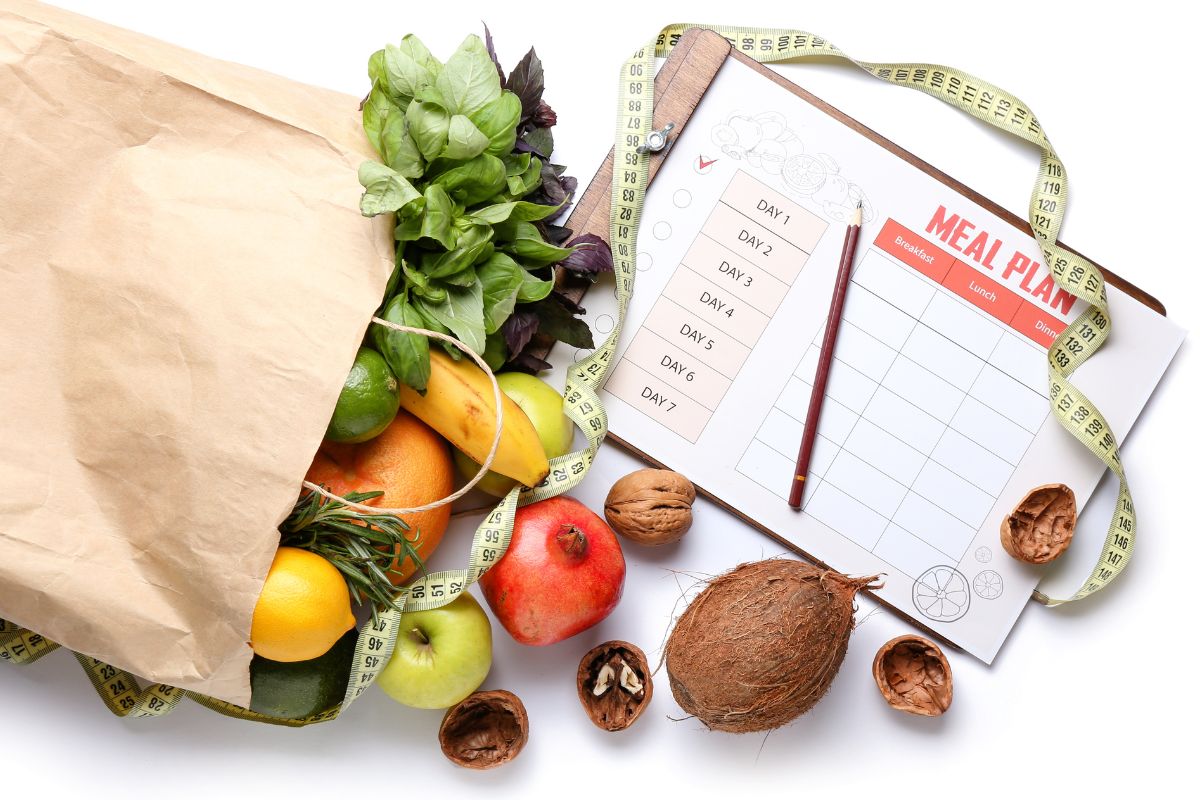Personalized Meal Planning for Weight Loss: How to Build the Perfect Plan for Your Body

If you’ve ever tried to lose weight, you know that it’s not as simple as cutting out carbs or eating less. It’s about balance, understanding your body’s unique needs, and fueling it with the right foods. A personalized meal plan goes the extra mile in making things work. These will perfectly match your eating habits with your body’s needs for effective eating so that weight loss is a journey rather than a single-goal approach. And with tools like Calorie Counter and meal tracking apps, it becomes easy to draft a plan for yourself. Let’s jump right into how to create the perfect weight loss meal plan.
Table of Contents
ToggleThe Benefits of Personalized Meal Planning for Weight Loss
When absolute weight loss plans are concerned, very few methods would be said to be effective. Each person’s body responds differently to food, so why should their meal plan be general? Personalized meal planning considers aspects specific to the individual, such as metabolism, activity level, and health goals, thus converting weight loss into an effective and sustainable process.
- Tailored to Your Needs: Employ the resources such as calorie counters to bring personalisation to your meal plans according to calorie intake. Thus, with the careful consumption of calories, you can have success in your weight loss goals.
- Better Adherence: The meal plan you stick to should be tailored to your taste, lifestyle, and nutrition.
- Clearer Insights: Calorie counting apps and meal tracks help you monitor what you eat and, if needed, adjust your eating habits for better results.
Top Superfoods to Include in Your Weight Loss Diet
Superfoods are not just some kind of trend; they are even more nutrient-dense foods that keep you healthy and help with your weight loss goals. Adding anything into your meal plan provides nutrition without stuffing you with too many calories.
- Leafy Greens: Spinach and kale are low calorie foods and filled with fiber and protein, therefore, these foods satisfy hunger.
- Avocados: Avocado is one of those luscious, fatty fruits that seems almost fanciful but actually helps in a myriad of ways to protect you.
- Berries: Strawberries, a berry known for being low in sugar and gluten-free, make a great on-the-go snack.
- Eggs: A complete protein source, eggs are perfect-as breakfast or as snacks-to keep you satisfied.
- Nuts and Seeds: Even though they have fat, they are a good source of healthy fats and protein and can be used to scratch the hunger itch, energizing the body for extended periods.
How to Create a Customized Meal Plan for Weight Loss Success
Meal planning according to body needs takes you beyond calorie counting; it should also be in the form of a balanced and pleasurable eating schedule that supports workouts and energizes the body. Now, there are calorie trackers that would again add value to an individual’s intake. They calculate calorie requirements, offer meal plans, and help with portion size when related to the needs of the user concerning weight loss goals.
- Set Your Goals: You need to figure out how many calories to reduce if you plan to lose weight.
- Choose Nutrient-Dense Foods: Focus should be kept on providing more nutrients per calorie from the food group, thereby encouraging more intake of vegetables, fruits and lean proteins.
- Track Your Progress: For achieving your goal, your offline calorie tracker can be really supportive.
- Plan Balanced Meals: A balanced meal will contain all the nutrients required by the body. Ideally, the three macronutrients: protein, healthy fat, and healthy carbs from whole grains, fruits, and vegetables would all be included in every diet.
- Stay Consistent: In every weight loss program, consistency is the key to success. It may sometimes be difficult to stick to the meal plan, but using a Calorie Tracker helps keep an eye on what you eat throughout the day, thus staying committed to your goal.
Quick and Simple Weight Loss Meal Plans for Busy Professionals
If you have long working hours and hardly have time to cook, then don’t worry! You can stick with your weight loss goals with fast and easy meal plans that work around your schedule.
- Meal Prepping: Set aside an hour each week to prepare meals in advance. This helps save time and ensures you’re not tempted to grab unhealthy options on the go.
- Simple Recipes: Choose meals that require minimal ingredients and can be prepared in under 30 minutes, like grilled chicken salads or veggie wraps.
- Portable Snacks: Keep healthy snacks like nuts, fruits, or protein bars on hand for when hunger strikes during meetings or commutes.
How Exercise Complements Your Weight Loss Meal Plan
Exercise isn’t just about burning calories—it plays a vital role in building muscle, boosting your metabolism, and helping you stay motivated. When combined with a balanced meal plan, exercise accelerates weight loss and supports overall health. Tools like Calorie AI help track your workouts, offering insights into how much energy you’ve burned and adjusting your calorie intake accordingly.
- Better Calorie Management: Exercise increases your daily calorie needs, and with a Calorie AI, you can adjust your meal plan to fuel your workouts and recovery.
- Boosts Metabolism: Regular physical activity helps increase your metabolic rate, making it easier to burn calories throughout the day.
- Helps with Muscle Preservation: By combining strength training with a proper meal plan, you can preserve lean muscle mass while losing fat.
5 Common Weight Loss Meal Plan Mistakes and How to Avoid Them
Even the best-laid plans can go awry if you’re not careful. Here are some common pitfalls in weight loss meal planning and how to avoid them:
- Skipping Meals: While it might seem like a good idea to eat less, skipping meals can slow down your metabolism and lead to overeating later.
- Not Tracking Calories: If you’re not accurately tracking your meals, it’s easy to eat more than you realize. Use tools like calorie counters to stay on top of your intake.
- Overeating Healthy Foods: Just because something is healthy doesn’t mean you can eat it in unlimited amounts. Pay attention to portion sizes.
- Ignoring Macronutrient Balance: A healthy meal plan isn’t just about calories—it’s about balancing proteins, fats, and carbohydrates for sustained energy and fat loss.
- Not Adjusting for Progress: Your calorie needs change as you lose weight. Make sure to update your meal plan regularly to reflect your progress.
FAQ
Q1: How do I know if my meal plan is working?
Track your calorie intake and weight loss progress over time. If you’re not seeing results, adjust your plan or use a calorie tracker to identify where improvements can be made.
Q2: Should I count every single calorie?
It’s a good idea to track the major meals and snacks, but don’t stress about every single calorie. Use calorie counters to stay on track without obsessive counting.
Q3: Can I eat carbs while losing weight?
Absolutely! The key is moderation. Choose whole grains and fiber-rich carbs to keep you full without spiking your blood sugar.
Conclusion
Building a personalized meal plan for weight loss is one of the most effective ways to achieve sustainable results. By incorporating tools like calorie counters, tracking your intake, and making small adjustments along the way, you’ll create a meal plan that works for your body, lifestyle, and goals. So, get started today and take control of your health journey—one delicious, nutritious meal at a time!
Published by Carol Jones
My aim is to offer unique, useful, high-quality articles that our readers will love. Whether it is the latest trends, fashion, lifestyle, beauty , technology I offer it all View more posts







